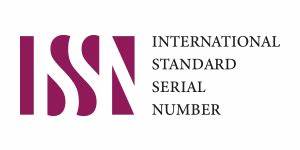PENGGUNAAN TEKNIK TONGUE TWISTER UNTUK MENINGKATKAN PENGUCAPAN SISWA DI SMA NEGERI 4 KOTA TERNATE
Sari
Kata Kunci
Teks Lengkap:
PDF (English)Referensi
Arikunto, S.(2010). Prosedur Penelitian: Suatu Pendekatan Praktik. Jakarta. PT Rineka Cipta.
Chomsky, N. and Halle, M. (1968). The Sound Pattern of English. New York: Harper and Row.
Dornyei, Z. (2001). Motivational Strategies in the Language Classroom. New York: Cambridge University Press.
Gilakjani, A. P. (2011). A Study of Factors Affecting EFL Learners‟ English Pronunciation Learning and Strategies for Instruction. International Journal of Humanities and Social Science, 2 (3), 119.
Gonzales, Natalia Iglesias. (2009). Learning English with Tongue Twister. Lulu Press Inc.
Harmer, Jeremy. (2007). The Practice of English Language Teaching. Harlow: Pearson Longman.
Kelly, G. (2000). How to Teach Pronunciation. Edinburgh: Pearson Education Limited.
Lutfiani, D. (2017). Using Tongue Twister to Improve Students’ Pronunciation. ELITE: Journal of English Language, Literature, and Teaching, 2(2), 110–115. https://doi.org/10.32528/ellite.v2i2.1511
Laurea, T. d. (2004). A Study on Teaching English Pronunciation in Primary Schools in Italy. Venezia: Universita Ca' Foscari
Machackova, B.E. (2010). Teaching English Pronunciation to Secondary School Students with Focus on ''the'' Consonants. A Diploma Thesis of Department of English Language and Literature. Masaryk University Bino: Unpublished.
Parera, J.D. (2004). Teori Semantik. Jakarta: Erlangga.
Sitoresmi, U. (2016). Tongue twisters in pronunciation class. ICTTE FKIP UNS 2015
Yates, Lynda. (2002). Pronunciation in the English Language Teaching Curriculum. Iowa: Iowa State University
DOI: https://doi.org/10.33387/j.cakrawala.v12i1.6527
Refbacks
- Saat ini tidak ada refbacks.
##submission.license.cc.by-nc4.footer##
printed ISSN (p-ISSN): 2089-6115





